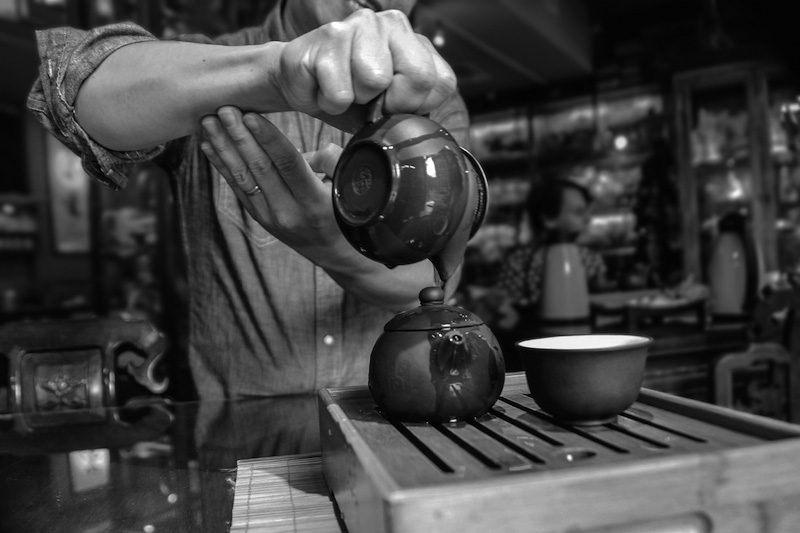The seductive scent of jasmine flowers steeped into liquid perfection has enchanted artists, scholars, and travellers for centuries. In East Asia, the art of tea roots itself so deeply into tradition that the simple enjoyment of the drink is incomplete without ritual. Through centuries of cultivation, the custom associated with serving tea refined with it generations of tea houses, some as aged as the traditions themselves.
For the learned tea-goer, this rich craft is fractured by urban cafés, where often abbreviated techniques dilute the complex art into a rarity. Luckily, in Montreal, an invitation to lose oneself in antiquity has been tucked away neatly among the cobblestones of old port, personified in the form of a small tea house named Ming Tao Xuan.
Stepping into Ming Tao Xuan is to leave one world for another. Eurocentric affluence, accented by Notre-Dame's regal elegance, blooms into an oriental orchid of cherry wood perfumed with fine silk. To the left, shelves of tea cased in intricately carved jars sit waiting behind a modest counter. On the right, an extravagant museum of tea sets, ranging from Yixing clay to crystalline glass implore one's sight to dance quicky from one display to another. Stationed between the arrangements are artfully carved tables and seats; the latter embellished by tapestry dyed in ruby, garnet, and gold.
The atmosphere offered by this particular tea house is one of reserved tradition tempted by unabashed finery. This fact is underscored by a menu which enlists an impressive repertoire of green teas, oolong, flowering teas, and herbal infusions. In a way, the booklet is a map of Asia—Gyokuro of Japan; Darjeeling, from India, Teguanyin for China. As an accompaniment to the drink, the teahouse also carries petits fours to partake in if one so desires.
In Ming Tao Xuan, the tea service elaborates upon East Asia’s ritual of preparation. First and foremost, each order of tea commands its own unique set of equipment. Some are porcelain, others clay; the list goes on, depending on the steeping time, desired temperature, and aesthetics of the ingredients. Served always on a bamboo filter tray, the waitstaff instructss and demonstrates to each customer the procedure of stepping. To begin, one is directed to examine briefly some tea leaves and aroma. The scent is light and barely noticeable; but after only a brief second’s wash in boiling water, its chaste fragrance blossoms into a luxuriant perfume. The ambrosia from this blanching is used to rinse, or ‘season’ the teacup, and is discarded before a second steeping. After being timed to perfection, the infusion is poured into the teacup, savoured first in aroma before finally swallowed to quench the thirst.
In this way, Ming Tao Xuan endeavours to guide each and every one of its clients through the time-refined art of tea tasting. For the frugal student, this experience charges six to nine dollars, the price of which includes a kettle of water for refill. Another perk unique to the shop’s collection is that every item displayed, from teas to extravagant sets, is available for purchase. When in doubt, the shopkeepers are always on site to answer any questions, no matter what length or complexity.
To some, ostensibly, the idea of linking tea with ritual is perhaps something of a platitude to a simple pleasure. To others, however, this is a bid to understand thousands of years of history and culture in its purest form. To the benefit of the latter, Ming Tao Xuan renders a small peek. It is a kaleidoscope, offering a colourful juxtaposition into the world of the fragrant, flavourful, and truly fascinating treatise on tea.







